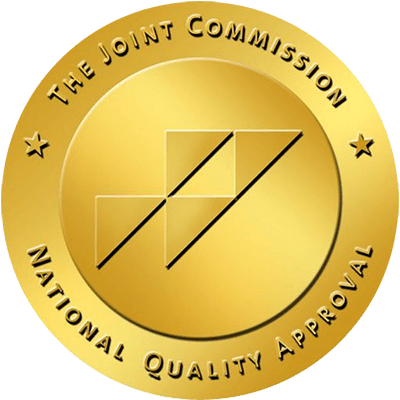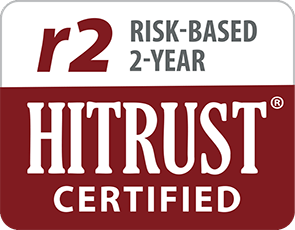Written by Ashley Kane,
Brightside Health
9 Minute Read

Medically reviewed by:
Conor O’Neill, PHD
Assoc. Director of Therapy
10 Minute Read
Depression is one of the most common—and also one of the most misunderstood—mental health conditions worldwide.
Getting an accurate depression diagnosis is the critical first step toward effective, personalized treatment. But how do you get diagnosed with depression and anxiety? How do mental health experts diagnose clinical depression?
In this in‑depth guide, we explain how depression is diagnosed, outline the official diagnostic criteria, discuss the professionals qualified to diagnose it, and help you prepare for your own assessment.
How Can You Get a Depression Diagnosis?
Are you wondering how to get tested for depression or how to get a depression diagnosis? And how do doctors diagnose depression?
There are several criteria for depression that a health professional will use to make a diagnosis.
Clinical Interview and Personal History
A thorough conversation is the backbone of every diagnostic evaluation.
If you’re asking, “How do I get diagnosed with depression?”, the process will include your clinician exploring how long your mood has felt low, whether you still find joy in favorite activities, and how changes in sleep, energy, appetite, and concentration affect day‑to‑day life.
By mapping your story across time—childhood, major life events, previous treatments—the provider distinguishes an episodic dip from an entrenched mood disorder.
Screening Tools and Symptom Scores
Depression diagnosis criteria include standardized questionnaires such as the Patient Health Questionnaire‑9 (PHQ‑9) or Beck Depression Inventory, which translate subjective feelings into numerical scores.
These instruments can track progress over time and flag subtle symptom patterns—like symptoms being worse in the mornings—that might otherwise be overlooked during conversation alone.
Medical Evaluation and Laboratory Work
Although not a requisite, if you’re seeing a clinician, because several physical illnesses mimic depressive symptoms, most will order baseline labs.
A comprehensive metabolic panel, thyroid function tests, vitamin B‑12 and folate levels, and—when indicated—hormone panels can uncover treatable culprits such as hypothyroidism or anemia.
Ruling these out prevents months of ineffective antidepressant trials.
If you’re seeing a therapist to discuss your symptoms and receive a diagnosis, it’s unlikely that they’ll order lab work.
Application of DSM‑5‑TR Criteria
After gathering history, scores, and lab data, the clinician compares findings against the Diagnostic and Statistical Manual of Mental Disorders (DSM‑5‑TR).
The manual specifies exactly how many symptoms, how long they must last, and how severely they must hamper functioning before the label Major Depressive Disorder applies.
How Do Mental Health Experts Diagnose Clinical Depression?
Are you wondering who diagnoses depression, and how to diagnose depression? Primary care physicians and mental health experts use a combination of evaluation tools and methods to diagnose clinical depression.
Comprehensive Physical Examination
Although depression is a mental health condition, a head‑to‑toe physical exam (although it’s not a requisite) by a primary care physician can offer vital clues.
Slowed reflexes can point toward hypothyroidism, while psychomotor agitation may suggest an anxious depression subtype.
These subtleties guide targeted testing and narrow the list of possible diagnoses.
Targeted Laboratory Tests
If libido is low, for example, testosterone or estrogen panels may be appropriate.
If unusual fatigue predominates, iron studies can reveal hidden deficiencies.
By tailoring labs to the presenting picture, primary care physicians avoid both missed pathology and unnecessary tests.
Structured Diagnostic Interviews
Instruments like the Mini‑International Neuropsychiatric Interview ensure no comorbid disorder—generalized anxiety, obsessive‑compulsive disorder, or bipolar spectrum illness—goes unnoticed.
A structured format standardizes questions while allowing follow‑up probes that humanize the process.
Differential Diagnosis and Rule‑Outs
Final confirmation involves actively disproving alternative explanations.
Is the sadness actually grief?
Could symptoms stem from lingering COVID‑19 effects?
Are stimulants masking a bipolar pattern?
Only when competing hypotheses are systematically eliminated does the clinician document depression.
Want to speak 1:1 with an expert about your anxiety & depression?
Depression Criteria Mental Health Professionals Consider
How to be diagnosed with depression? When considering whether a patient is suffering from depression, mental health professionals take into consideration several criteria.
Duration of Symptoms
The DSM‑5‑TR requires that mood and related symptoms persist most of the day, nearly every day, for a minimum of two consecutive weeks.
Shorter episodes may signal adjustment disorder, acute stress, or no disorder at all rather than a depressive episode.
Core Mood Changes
Either a pervasive depressed mood or a marked loss of interest and pleasure—anhedonia—must be present.
Research consistently shows that anhedonia predicts poorer response to first‑line antidepressants, highlighting why clinicians must determine which core mood change dominates.
Symptom Threshold
Five or more total symptoms—ranging from fatigue to thoughts of death—must cluster in the same two‑week window.
Severity matters: fleeting low energy lacks the clinical weight of day‑long exhaustion that halts work and relationships.
Functional Impairment
Symptoms must cause clinically significant distress or interfere with social, occupational, or other important activities.
Function is the metric insurers, disability programs, and researchers rely on to gauge real‑world impact.
Exclusions and Differential Points
Depressive episodes triggered exclusively by substances, medications, or medical illnesses receive different diagnoses and often different treatments.
Clarifying these exclusions prevents a misdiagnosis that could delay appropriate medical care.
Who Can Diagnose Depression?
A major depressive disorder diagnosis can be made by a variety of health professionals.
Psychiatrists
As medical doctors who specialize in mental health, psychiatrists can both diagnose and prescribe medication, such as gabapentin, for depression.
Their medical training equips them to differentiate between primary mood disorders and medical imitations such as Cushing’s disease.
Primary‑Care Providers
Family physicians, internists, and nurse practitioners are often the first to hear about low mood during routine appointments.
Many now use validated screeners and initiate treatment, referring to specialists when cases become complex or unresponsive.
Clinical Psychologists
With doctorates focused on assessment science, psychologists excel at comprehensive testing and psychotherapeutic interventions.
Licensed Therapists
Professional counselors, marriage and family therapists, and clinical social workers conduct diagnostic interviews within their scope of practice.
When medication appears necessary, they collaborate with prescribers to ensure coordinated care.
Challenges in Diagnosing Depression
Despite evaluation criteria and diagnostic tools, there are a few challenges health professionals may face in diagnosing depression in patients.
Symptom Overlap With Other Conditions
Difficulty concentrating could stem from attention‑deficit/hyperactivity disorder, sleep apnea, or early dementia.
Distinguishing overlap requires careful chronology—did focus problems predate mood changes, or vice versa?
Cultural and Atypical Presentations
In some cultures, emotional distress is expressed physically.
An older adult from East Asia may report only headaches, while a teenager in the United States might frame sadness as irritability.
Cultural humility helps clinicians decode these signals.
Co‑Occurring Disorders
Roughly sixty percent of people with depression meet criteria for an anxiety disorder.
Treating depression alone can leave panic or worry untouched, so an accurate dual diagnosis shapes a combined therapeutic plan.
Stigma and Underreporting
Fear of judgment leads many to soften answers on screening tools.
Clinicians who normalize mental‑health struggles early in the interview often elicit more honest, diagnostically useful responses and a more accurate depression screening score.
Subthreshold and Mixed Episodes
Can you be diagnosed with depression if your symptoms fall just shy of DSM thresholds? Or what if you have depressive lows combined with brief bursts of elevated energy?
Experience and longitudinal follow‑up help clinicians decide whether subclinical depression or early bipolar disorder is unfolding.
How to Get Diagnosed With Depression: Preparing for Your Appointment
There are a few things you can do to prepare for your appointment to discuss your depression symptoms.
Track Symptoms Ahead of Time
Keeping a two‑week mood journal—rating sleep, appetite, thoughts, and energy—creates objective data you and your clinician can analyze together.
Fluctuations tied to menstrual cycles or shift‑work schedules often emerge only through diligent tracking.
Organize Medical and Medication History
A concise list of surgeries, chronic illnesses, and every prescription or supplement prevents dangerous interactions and highlights physical factors that could color your mood.
Document Family Mental‑Health Patterns
Because genetics contributes up to forty percent of depression risk, noting relatives with mood disorders, suicide, or substance‑use conditions alerts clinicians to inherited vulnerabilities and informs treatment aggressiveness.
Prepare Targeted Questions and Goals
Asking whether psychotherapy alone can suffice, or if combining it with medication offers faster relief, keeps the consultation focused on your preferences and priorities.
Be Transparent About Substance Use
Even moderate alcohol can impair mood (leading to depression or mimic depression), worsen sleep, and undermine medication effectiveness.
Disclosing actual consumption levels lets your provider tailor realistic, compassionate guidance.
Take an Online Test to See Whether You May Have Depression
Are you wondering how to get a diagnosis for depression? Brightside’s free depression test delivers clear insight into your current mood and evidence‑based next steps, including therapy, medication, and the positive impact of exercise and depression.
- Answer nine straightforward questions.
- See your confidential results instantly.
- Discover personalized care options you can begin right away.
Ready to start feeling better?
Take the Brightside Depression Test to get set on the right path.
Want to speak 1:1 with an expert about your anxiety & depression?
Key Takeaways
Diagnosed depression hinges on a layered process—clinical interview, symptom scores, medical evaluation, and DSM criteria.
Multiple professional types can perform this assessment, but preparation on your part dramatically improves its precision.
After reading this guide, consider completing an online screener, compiling your health history, and scheduling a comprehensive evaluation with a trusted provider.
FAQs
What is being diagnosed with depression called?
Being formally identified as meeting DSM‑5 criteria for Major Depressive Disorder is typically recorded as a depression diagnosis.
Your health record will include an ICD‑10 code, such as F32.1, that specifies episode features and guides insurance coverage.
Are there any physical tests for depression?
How do you diagnose depression using physical tests? No single blood test or brain scan can confirm depression.
Laboratory studies instead serve to exclude medical conditions that masquerade as mood disorders, ensuring the treatment plan targets the true cause of distress.
What are the three levels of depression?
Clinicians generally classify severity as mild, moderate, or severe based on functional impairment, symptom count, and questionnaire scores.
The category determines whether therapy, medication, or a combination is recommended.
What can be mistaken for depression?
Hypothyroidism, anemia, vitamin D deficiency, bipolar II disorder, generalized anxiety, ADHD, chronic fatigue syndrome, and medication side effects commonly mimic depressive symptoms.
Thorough assessment—including lab tests—clarifies the picture and gives more accurate depression diagnoses.














